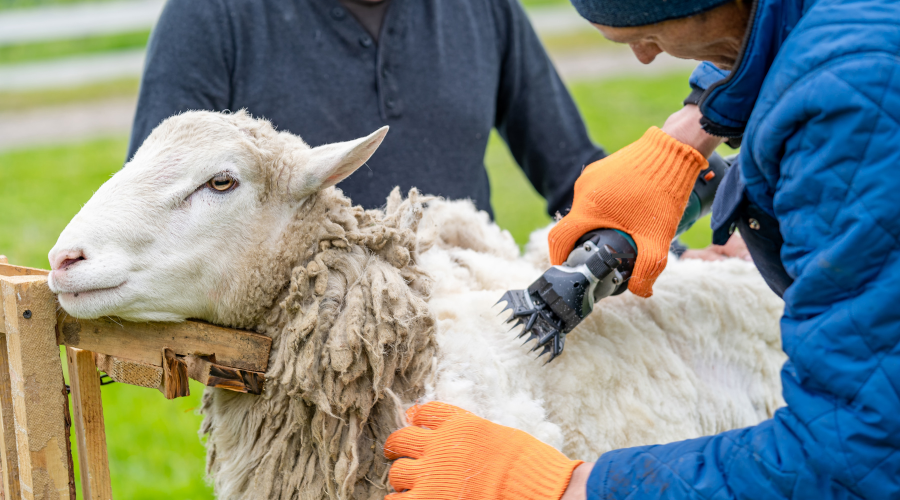New project launches to improve future of UK wool industry
17th January 2024
A new project launches to further the productivity, sustainability, and resilience of the UK sheep farming and wool industries by exploring opportunities to improve fleece quality.

Joining together with industry partners, the National Sheep Association (NSA) will be involved in a 12-month wool-focused research project called Fabulous Fibre that will look at increasing the value of wool through breeding and genetics.
The project goal is to conduct a feasibility study to evaluate the potential of reducing the micron count of finer wool quality UK sheep breeds. This can increase productivity, sustainability, and resilience for sheep farmers and the wool industry.
Wool quality is measured by testing wool fibres to establish a micron value. Lower micron wool is softer to the touch in fabrics and more highly valued for textiles requiring this attribute, such as high-quality suits or layers worn next to skin, the lower the micron, the greater the value per kilogram.
Production of premium quality
Fabulous Fibre brings together a consortium with a passion for the future of wool. The group comprises NSA, British Wool, the Centre for Excellence in Livestock (CIEL), Langrish Farmers and the Wool Testing Authority Europe (WTAE), all bringing essential resources and expertise to the project.
The NSA chief executive, Phil Stocker, said: “If farmers can differentiate wool based on micron, they can produce consistent lines for sale, commanding price-premiums, or genetically improve wool quality. Wool traits are highly heritable, so genetic gain can be fast once protocols for measurement and genetic evaluation are in place.
“This project supports UK sheep farmers, nature and wider society by focusing on production of premium quality. Benefits will be delivered to farmers in terms of profitability and sustainability while delivering net zero targets and more widely through environmental protection, increased biodiversity, carbon sequestration, employment and supporting rural communities.”
New opportunities
The industry struggles with a lack of sufficient data on individual animal micron levels and the absence of a UK on-farm objective measurement tool. Current testing is for aggregated lots from multiple farms, with no routine testing for farms or individual sheep. Lots are often highly variable for diameter, due to variation within animal fleeces, between animals and between farms, significantly reducing the price.
British Wool chief executive, Andrew Hogley, added: “When you look at the wool currently produced in the UK, there is very little that falls into the lower micron categories. Where it does, we are able to command a significant premium, bluefaced Leicester wool trades at prices above those for comparable Australian wools. If we can produce lower micron wool in the UK, it should command a significant premium and will also potentially open up new product opportunities for British wool.”
Frank Langrish’s sheep flock is set to be the starting point for the project’s research. He said: “A lower micron value increases the uses of wool and moves it from carpets and interior textiles to clothing and fashion items, greatly increasing the uses and value. My aim for the project is to reduce micron, and variation in the fibre diameter to produce a premium product yet still have a functional sheep that produces both meat and wool from forage.”
Wool-testing device
An on-farm, portable wool-testing device will be piloted in the project to provide accurate, real-time data, speeding up the identification of finer wooled sheep within Frank’s flock. The accuracy of on-farm measurements will be compared to WTAE standards.
CIEL’s innovation specialist, Dr Mark Young, added that the initial phases of the project will involve benchmarking Mr Langrish’s flock to identify superior quality breeding stock and assessing lambs produced in 2024 from these parents, allowing an estimation of the degree to which micron is genetically controlled (as heritability). The trade-offs will be monitored.
Read more livestock news in our livestock hub.
